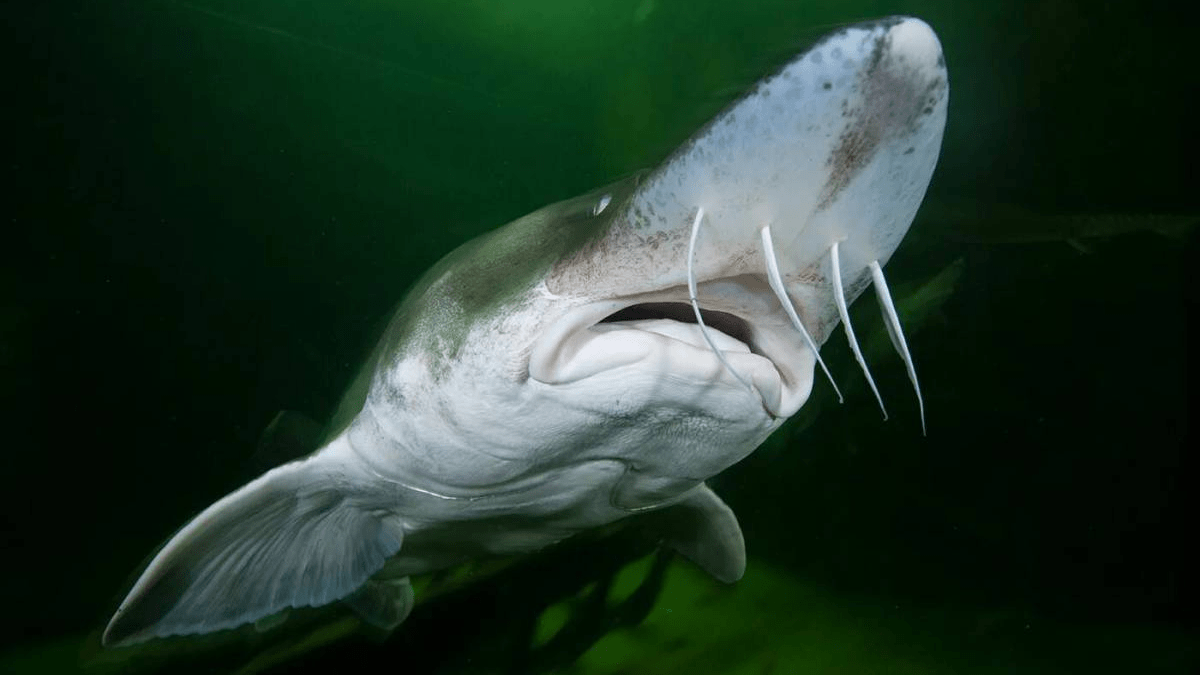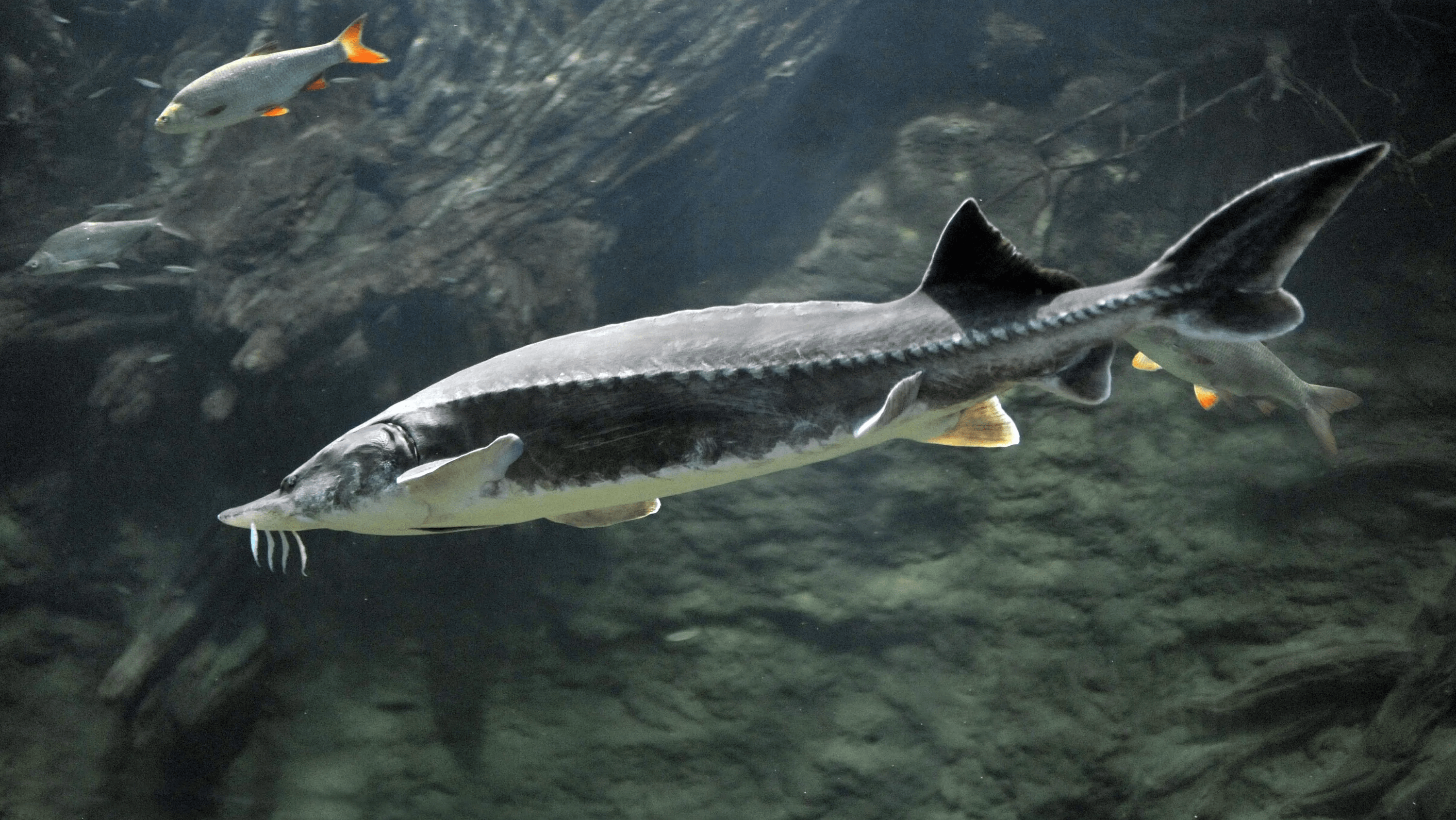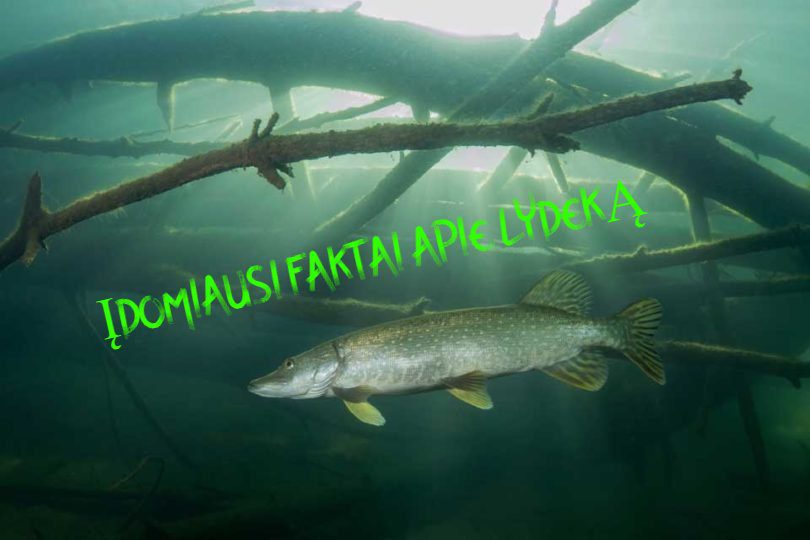The large sturgeon is one of the largest fish that can be found in the waters of our planet. According to official data, its length can reach 4.5 meters and weigh up to 1500 kilograms. Although there is evidence that sturgeon was caught twice as big. In any case, such data show that the Great Sturgeon is the largest representative of the sturgeon family.
The appearance of a sturgeon
The big one sturgeon is a cartilaginous bony fish whose scales grow together to form bony plates that cover the entire body and head of the fish. Like all other sturgeons, instead of a bony spine, they have a cartilaginous noochord that forms the basis of the skeleton. The skull also consists of cartilage.
Body
The body is large, heavy, round, elongated from head to tail. The body is gray, the back is slightly darker than the sides. The belly is white, sometimes yellowish. Covered by several rows of bony plates.
Head
The head is massive, large, wide. There is a pointed muzzle on the head. The muzzle is soft from the sides and from above. The mouth is below the muzzle and has thick, fleshy lips.
On the underside in front of the mouth are four antennae, laterally flattened with leaf-like appendages. They have no teeth, only fry and young fish have teeth, they disappear as the sturgeon grows. The eyes are small, located on the top of the head, vision is poor. It navigates mainly using its sharp smell and sensitive antennae near the mouth.

Sizes
The large sturgeon is the largest of all sturgeon fish. If we consider it a freshwater fish, then it can be classified as one of the largest fish living in rivers. In natural conditions, it can grow up to 3-4 meters and weigh 800-1000 kg. Several cases of the capture of particularly large specimens have been described:
- In 1922, a large sturgeon weighing 1200 kg was caught in the Caspian Sea, and in 1924 - 1000 kg.
- in 1939 A sturgeon weighing 750 kg was caught in Temryuk Bay of the Sea of Azov.
- In 1970, a female sturgeon weighing 800 kg was caught in the Volka River delta, which contained 112 kg of eggs.
- In 1989, a sturgeon with a length of 4 m 20 cm and a weight of 966 kg was caught in the same place.
- In 2013-2015, several sturgeons weighing 125-130 kg were caught in the Ural River.
Currently, there are practically no fish of this size. The average size of fish caught for commercial purposes is 80-150 cm long. The weight of such fish reaches about 20-30 kg.
Lifetime
The big sturgeon is one of the longest living fish. It can live up to 100 years. Its average lifespan is about 40-50 years.
Where does the Great Sturgeon live?
Large sturgeon is an anadromous fish with an anadromous life cycle. This means that they spend most of their lives in the sea, migrating to rivers during the spawning period and then returning to the sea.
Seas with natural distribution of sturgeon:
- Caspian sea
- Adriatic Sea
- Black Sea
During spawning, large sturgeon enter the mouths of these marine rivers and rise upstream. Most of these fish are found in the rivers: Volga, Dnieper, Don, Dniester, Danube, Ural, Terek rivers.
The largest number of populations is in the Caspian Sea. It can also be found in almost any river in the Caspian basin. They used to swim hundreds of kilometers against the current.
Spawning sturgeons could be found in the upper reaches of the Kama and Volga near Tver. That is, the fish traveled several thousand kilometers. Now the road to the natural spawning grounds is closed due to hydropower plants. Along the Don, they rise only as far as the Tsimlyansk hydroelectric power station.
To solve this problem, a special fish lift was built in the Volgograd basin, which, unfortunately, is not working at the moment.
In the Black Sea, the big sturgeon is found along the coast of Crimea, on the coast of Turkey in the area of the Kyzylyrmak and Yesilirmak rivers, and on the coast of the Caucasus near the mouth of the Rioni River. The Black Sea population is now on the brink of extinction as spawning grounds for sturgeon become inaccessible due to hydroelectric power plants.
The big sturgeon also lived in the Adriatic Sea. However, not a single individual has been found in this sea in the last 50 years, so the Adriatic population is considered extinct.
What does he eat?
The big sturgeon is a predator and mainly eats all the fish smaller than itself. Sturgeon fry feed on plankton, fish eggs, larvae and small insects. As a young sturgeon grows, it begins to eat various molluscs and crustaceans, worms, eggs, larvae and fry of other fish and its own species.
Young sturgeons feed on the fry of other fish. The bigger the sturgeon gets, the more it hunts larger fish. Adults feed 95-97% on other fish. In addition, they sometimes hunt waterfowl.
Most often, big sturgeon eats the following fish: carp, roach, pike, crucian carp, bream. It can also migrate long distances in search of food.
How the big sturgeon spawns
Large sturgeon grows quite slowly, so it matures late. Males become sexually mature at 12-14 years, females at 16-18 years. Female spawning is affected by body weight: until the female has gained the necessary weight, she cannot spawn. Most often, a female gains the necessary weight only after reaching the age of 22-25.
Big sturgeon live for more than 40 years, males leave for spawning once every three to four years, females every 4-6 years. After spawning, it returns to the sea. During its life, a large sturgeon spawns on average 8-9 times.
The fecundity of the female depends on her size, the larger the female, the more eggs she lays: on average, from 500 thousand to a million. Especially large individuals can mature up to 5 million eggs.
When spawning comes, the big sturgeon, which spends most of its life in the sea, enters the estuaries and rushes to the upper reaches of the rivers. Sturgeon can travel great distances to spawning grounds, covering several thousand kilometers.
The fish look for stretches of rivers with fast currents and clean, oxygenated water with rocky or sandy bottoms. For spawning, the female looks for the deepest places in the river, the best option is a hole 10-15 meters deep.
Females lay eggs, and males immediately fertilize them. The eggs are coated with a sticky substance that allows them to stick to the sandy or rocky bottom even in strong currents. After spawning, the big sturgeon returns to the sea, where after a long winter and spawning, it begins to actively feed.
Sturgeon roe is black, large: 3.6-4.3 mm in diameter, weighing 26-36 mg. The hatching time of the fry depends on the water temperature: embryo development takes 8-10 days at 8-11°C, 5-6 days at 15-16°C. More than 80% eggs fall prey to other fish and die, the remaining eggs hatch into larvae that feed on yolk sac reserves.
Larvae quickly turn into fry, which begin to search for food on their own. Fry live in shallow water, feed on plankton, small algae.
Big sturgeon in cooking
Sturgeon meat and especially its roe are considered a valuable delicacy. Meat, roe and head are mostly used in cooking. Sturgeon is cooked in soup, grilled and in the oven, prepared with steaks, salted, dried, and smoked.
Caviar has 15% of fat and fillet has 7%. The lean meat of sturgeon is rich in easily digestible proteins, minerals and vitamins. Meat contains essential amino acids.
Calcium and phosphorus help strengthen bones, hair and nails. Potassium normalizes myocardial activity. Vitamin A improves vision and skin condition, vitamin D strengthens bone tissue, prevents calcium leaching from bones and the development of age-related osteoporosis.
Black caviar is the most expensive food product today. Its price can reach several thousand euros per kilogram.






